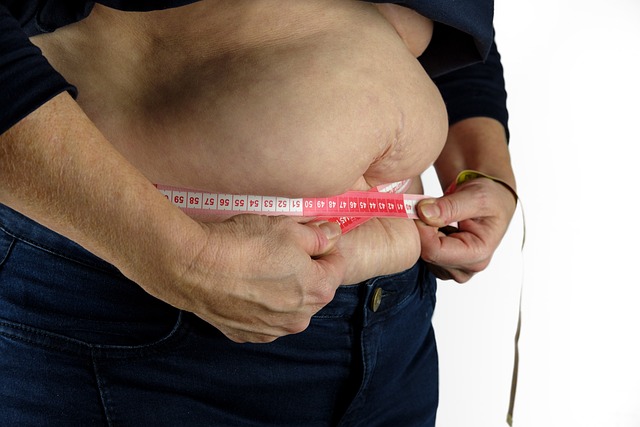Targeted fat loss focuses on reducing white adipose tissue (WAT) using non-invasive techniques like cryolipolysis, HIFU, and laser-assisted lipolysis, aiming for localized results without impacting brown adipose tissue. Popular methods include CoolSculpting, Emsculpt, and topical creams with scientifically backed ingredients. Adopting a healthy lifestyle is crucial for supporting fat cell reduction. Safety should be prioritized by choosing qualified providers who follow approved techniques and provide comprehensive consent forms. Post-treatment care instructions ensure optimal healing and minimal side effects.
“Discover the transformative power of targeted fat loss treatments in this comprehensive guide. Understand the fundamental role fat cells play in weight management and explore the cutting-edge science behind today’s effective methods. From non-invasive techniques like laser therapy to medical procedures and topical creams, we delve into diverse options. Learn how lifestyle changes can enhance results while ensuring safety and addressing potential side effects. Uncover the secrets to achieving your goals with targeted fat loss.”
Understanding Fat Cells and Their Role in Weight Management

Fat cells, also known as adipocytes, are an essential part of our bodies’ fat storage system. They play a crucial role in energy regulation and weight management. These cells act as tiny reservoirs, storing excess energy from our diet in the form of triglycerides. When our energy needs exceed what we consume, fat cells release stored lipids to provide fuel for various bodily functions.
Understanding this relationship between fat cells and energy balance is key when discussing targeted fat loss. Different treatments aim to modulate fat cell function or reduce their number to promote weight loss. Some focus on inhibiting lipid storage, while others target the breakdown of stored fat. By manipulating these processes, certain treatments can help individuals achieve their desired body composition goals through targeted fat loss.
The Science Behind Targeted Fat Loss Treatments

The science behind targeted fat loss treatments revolves around understanding the physiology of fat cells and utilizing cutting-edge technologies to isolate and reduce their number. Fat cells, or adipocytes, store energy in the form of lipids, which can be mobilised when needed. Traditional methods of weight loss often rely on reducing overall calorie intake or increasing physical activity, leading to a decrease in total body fat, including both white adipose tissue (WAT) and brown adipose tissue (BAT). However, targeted fat loss treatments focus specifically on WAT, the primary site of energy storage in adults, aiming for more localized results.
Advanced technologies such as cryolipolysis, high-intensity focused ultrasound (HIFU), and laser-assisted lipolysis enable precise targeting of fat cells without affecting surrounding tissues. These procedures work by either freezing (cryolipolysis) or breaking down (HIFU, laser-assisted lipolysis) the adipocytes, leading to their gradual elimination from the body through natural processes like lymphatic drainage and metabolism. By targeting specific areas, these treatments offer a more efficient and effective approach to achieving localized fat reduction, catering to individuals seeking improved aesthetics or addressing specific problem areas.
Non-Invasive Methods for Fat Cell Reduction

Non-invasive methods for fat cell reduction have gained significant popularity due to their safety, minimal downtime, and effectiveness in achieving targeted fat loss. These procedures leverage advanced technologies to reduce stubborn fat deposits without surgery. One such method is CoolSculpting, which uses cryolipolysis to freeze and destroy fat cells. Another popular option is laser-assisted lipolysis, where low-level lasers are used to break down and eliminate fat cells. These non-invasive treatments offer precise targeting of problem areas, making them ideal for individuals seeking localized fat reduction.
Moreover, radiofrequency (RF) technologies like Emsculpt and EmSlim have emerged as game-changers in the beauty industry. By combining targeted heating with muscle stimulation, these methods not only reduce fat cells but also promote collagen production, leading to improved skin texture and tone. These non-invasive approaches provide a less risky alternative to surgical procedures, making them attractive options for those aiming to achieve their body goals without extensive recovery periods.
Medical Procedures for Effective Fat Elimination

Medical procedures offer a direct and effective approach to targeted fat loss. Technologies like CoolSculpting® use cryolipolysis, freezing fat cells, while others employ focused ultrasound to break down adipose tissue. These non-invasive treatments are often preferred for their minimal downtime and satisfactory results.
Each method targets specific areas, ensuring precise fat reduction. Professional medical supervision guarantees safety and optimal outcomes. As with any procedure, individual experiences may vary, highlighting the importance of consulting specialists to determine the best course of action for one’s unique body and goals, focusing on both effectiveness and long-term health benefits.
Exploring Topical Creams and Ointments for Fat Loss

Many people looking for targeted fat loss turn to topical creams and ointments, hoping to achieve reductions in problem areas. These products are designed to target specific fat deposits by increasing circulation, stimulating metabolism, or inhibiting the enzymes responsible for fat storage. While they can be a convenient option, it’s important to remember that not all creams deliver on their promises.
When exploring topical treatments, individuals should look for active ingredients backed by scientific research, such as caffeine, capsaicin, and certain herbal extracts. These components may help disrupt fat cell membranes, enhance lipolysis (fat breakdown), and promote perspiration. However, results can vary greatly depending on factors like skin type, body composition, and adherence to application instructions.
Lifestyle Changes to Support Fat Cell Reduction

Adopting a healthy lifestyle is an effective way to support fat cell reduction and promote targeted fat loss. A balanced diet, rich in whole foods like lean proteins, complex carbohydrates, and healthy fats, plays a crucial role. Reducing processed foods, sugary snacks, and excessive calories can significantly impact your body’s fat storage. Regular exercise, combining cardiovascular workouts with resistance training, enhances fat burning and builds muscle, which aids in increasing metabolism and promoting calorie expenditure.
Additionally, prioritizing adequate sleep, managing stress levels through techniques like meditation or yoga, and staying hydrated are essential lifestyle changes. These practices contribute to hormonal balance and optimal body composition, making it easier to achieve and maintain targeted fat loss goals.
Safety, Side Effects, and Recovery: What to Expect

When considering fat cell reduction treatments, safety should be your top priority. These procedures are designed to target specific areas for targeted fat loss, but they are not without risks. It’s crucial to choose a qualified and experienced provider who uses approved techniques and equipment. Reputable clinics will prioritize patient safety and provide comprehensive consent forms outlining potential side effects.
Common side effects may include temporary redness, swelling, bruising, and discomfort at the treatment site. In rare cases, more serious reactions like infection or allergic responses can occur, but these are typically manageable with proper aftercare. Recovery time varies depending on the method used, but most patients can resume their normal activities within a few days to a week. Your provider will give you specific instructions on post-treatment care, including any restrictions on physical activity or dietary changes required for optimal healing and minimal side effects.
